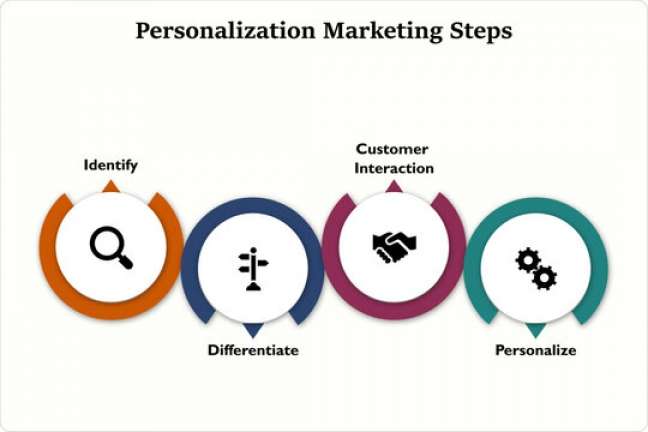Today, the ability of different software applications to communicate and collaborate is crucial. Whether it’s sharing data between a website and a mobile app or enabling third-party services to interact with your platform, efficient web services are the linchpin that allows this collaboration to flourish. Read on to discover more about the strategies and best practices for crafting web services that enable seamless collaboration with external applications. Let’s explore how well-designed web services enhance interoperability and facilitate data exchange in a secure and efficient manner.
Understanding the Basics of Web Services
Before diving into the nitty-gritty of crafting efficient web services, it’s essential to understand the basics. Web services are a set of protocols and technologies that allow applications to communicate over the Internet. These services come in various forms, including RESTful APIs, SOAP services, and more. RESTful APIs have gained significant popularity due to their simplicity and scalability. REST, which stands for Representational State Transfer, relies on standard HTTP methods to enable communication between systems. Understanding these fundamental concepts is the first step toward creating efficient web services.
When it comes to designing web services, RESTful APIs offer a particularly elegant and straightforward approach. By embracing REST principles, you can create web services that are easy to understand, interact with, and extend. RESTful APIs utilize HTTP methods like GET, POST, PUT, DELETE, and PATCH to perform actions on resources, making it clear and intuitive for external applications to make requests and receive responses.
A RESTful API also promotes statelessness, which means that each request from a client to the server must contain all the information needed to understand and process the request. This design principle simplifies the server’s task, ensuring that each request is independent and can be handled without reliance on prior requests. It not only streamlines communication but also enhances the scalability and reliability of web services.
Incorporating RESTful APIs into your service design helps ensure that your applications can easily integrate and communicate with external systems. Furthermore, it allows for the creation of resource-oriented services, which align well with the principles of REST and can simplify the mapping of application data to web service resources.
Designing for Interoperability
Efficiency in web services is closely intertwined with the concept of interoperability. It’s the key to building systems that seamlessly communicate and cooperate, regardless of their underlying technologies. When designing web services with the goal of fostering interoperability, consider several crucial factors.
One of the fundamental aspects of interoperability is the choice of data formats. Standard data formats such as JSON (JavaScript Object Notation) and XML (eXtensible Markup Language) have become industry staples for exchanging information between different systems. They are both human-readable and machine-parsable, making them ideal choices for data representation in web services. JSON is lightweight, easy to work with, and widely supported in modern programming languages. XML, on the other hand, is highly extensible and structured, suitable for more complex data models.
RESTful APIs, which were briefly mentioned earlier, offer a design philosophy that plays a significant role in achieving interoperability. They are built on principles that promote a stateless and uniform interface for interaction between services. REST emphasizes the use of standard HTTP methods like GET, POST, PUT, DELETE, and PATCH for various actions on resources. This uniformity simplifies the integration process, as external applications can rely on these well-established conventions. It’s like speaking a common language in the world of web services.
Another vital aspect of ensuring interoperability is comprehensive documentation. Properly documented web services provide clear and detailed guidance on how to interact with them. Documentation serves as a bridge between the service provider and the external application developers, making it easier for them to understand the service’s capabilities and limitations. This clarity minimizes potential issues and misunderstandings during integration.
Version control is equally indispensable. As web services evolve over time, changes may occur. Ensuring backward compatibility with previous versions of the service is crucial to avoid breaking existing integrations. With version control, external applications can continue to function seamlessly with your service, even as you make enhancements or modifications. It’s a way of accommodating change without disrupting the existing ecosystem of collaborating applications.
In essence, designing web services for interoperability is about speaking a common language, embracing standards, and providing clear instructions to those who wish to collaborate with your system. The choice of data formats, adherence to REST principles, and meticulous documentation, coupled with version control, form a comprehensive strategy for creating web services that not only serve as efficient bridges between different applications but also foster a thriving ecosystem of interoperability.
Security First
Security is not just an afterthought but an overarching principle that must guide every aspect of your web service design and implementation. The integration of external applications necessitates vigilant safeguards to protect sensitive data and thwart potential breaches.
One of the first lines of defense is implementing robust authentication mechanisms. These mechanisms authenticate and authorize users or external applications before granting access to your web services. Three popular approaches are API keys, OAuth, and JWT tokens, each tailored to different use cases. API keys provide a simple way to identify the application making the request, while OAuth is a more elaborate protocol for delegated authorization, commonly used in scenarios where a user’s data is involved. JWT (JSON Web Tokens), on the other hand, is a compact, self-contained way to represent information securely between two parties and is often used to ensure data integrity.
Another critical aspect of web service security is encrypting data in transit. This is achieved by using HTTPS (Hypertext Transfer Protocol Secure), which establishes a secure connection between the client and server, ensuring that data transmitted between them remains confidential and cannot be tampered with in transit. HTTPS employs SSL/TLS encryption protocols to protect data, making it an industry standard for secure communication.
To further bolster security, it’s imperative to validate input data. Unvalidated data is a common entry point for attackers seeking to exploit vulnerabilities. Implement strict input validation procedures to prevent malicious data from being processed or stored. This safeguards your application against common security risks like SQL injection, where malicious SQL queries are injected into the application, and cross-site scripting (XSS), which involves injecting malicious scripts into web pages viewed by other users.
Moreover, regular maintenance and vigilance are key elements of a secure web service. Security threats evolve, and vulnerabilities can emerge in software and libraries used in your web services over time. Stay proactive by keeping your software components up-to-date, applying security patches, and monitoring for potential threats. A comprehensive strategy includes vulnerability assessment and penetration testing to identify and remediate potential security weaknesses.
Efficient Data Handling
Efficiency in web services involves optimizing data handling. To achieve this, consider using data compression techniques like GZIP to reduce the payload size, which can improve response times and reduce bandwidth usage. Caching frequently requested data can also enhance performance by reducing redundant database queries. Leveraging asynchronous processing and event-driven architectures can further boost efficiency, especially when handling resource-intensive tasks like file uploads or batch processing.
Scalability and Load Balancing
Web services should be built with scalability in mind. As your application gains popularity, you should be prepared to handle increased traffic and demand. Load balancing techniques ensure that requests are distributed evenly among multiple server instances, preventing bottlenecks and downtime. Cloud-based infrastructure, such as AWS, Azure, or Google Cloud, can provide the scalability you need by allowing you to auto-scale your web services based on traffic patterns.
Monitoring and Analytics
To maintain efficient web services, it’s essential to continuously monitor their performance. Implement robust monitoring and analytics solutions that provide real-time insights into your services’ behavior. Tools like Prometheus, Grafana, and New Relic can help you track metrics, detect anomalies, and pinpoint bottlenecks. Monitoring and analytics data can guide you in making informed decisions to optimize your web services and maintain their efficiency over time.
Evolving Your Web Services
Web services are not static entities but dynamic components of your digital ecosystem. They should continuously evolve to adapt to the ever-changing needs of your application and its collaborators. In a world where technology is in constant flux, the ability to refine and expand your services is vital for remaining relevant and efficient.
The feedback loop between your external applications and the user base is a valuable source of insights. As you receive feedback and gather data, it becomes evident where your web services can be enhanced. Pay close attention to the pain points and suggestions from your collaborators, as they often provide a roadmap for improvement. Remember that the primary goal is to enhance the collaborative experience, making it more intuitive, efficient, and responsive.
When implementing changes, it’s crucial to maintain backward compatibility. Breaking changes can disrupt existing integrations and lead to frustration among your user base. To avoid such issues, consider using versioning in your APIs. This allows you to introduce new features or updates gradually while ensuring that older versions of your web services remain intact. Versioning is a powerful strategy that enables you to balance innovation with stability, allowing external applications to transition to the latest features at their own pace.
This approach of continuous improvement, backward compatibility, and thoughtful versioning ensures that your web services remain adaptable and aligned with the evolving landscape of your application and its collaborators. It fosters trust and reliability among your partners, as they can count on a consistent and evolving web service that caters to their evolving needs.
















